#blagoevgrad province
Text
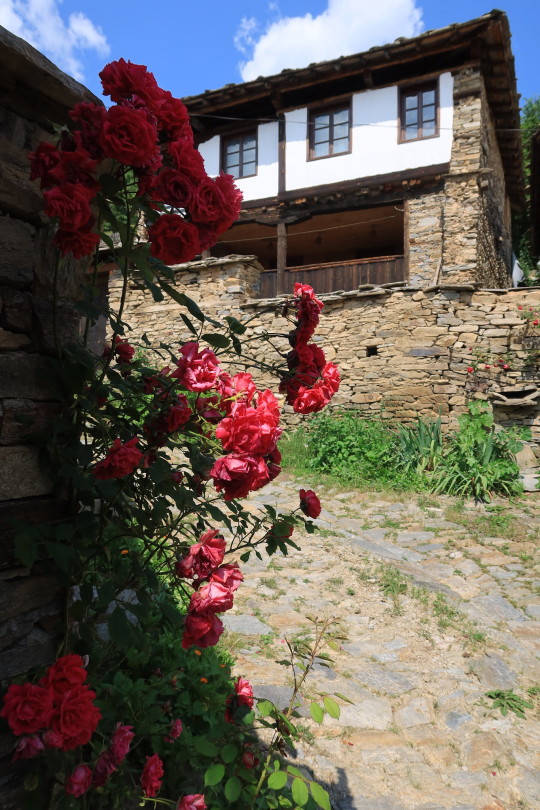

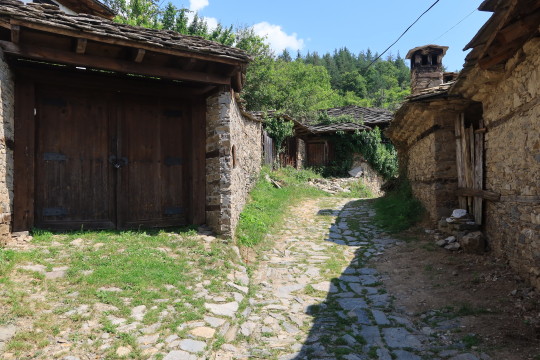
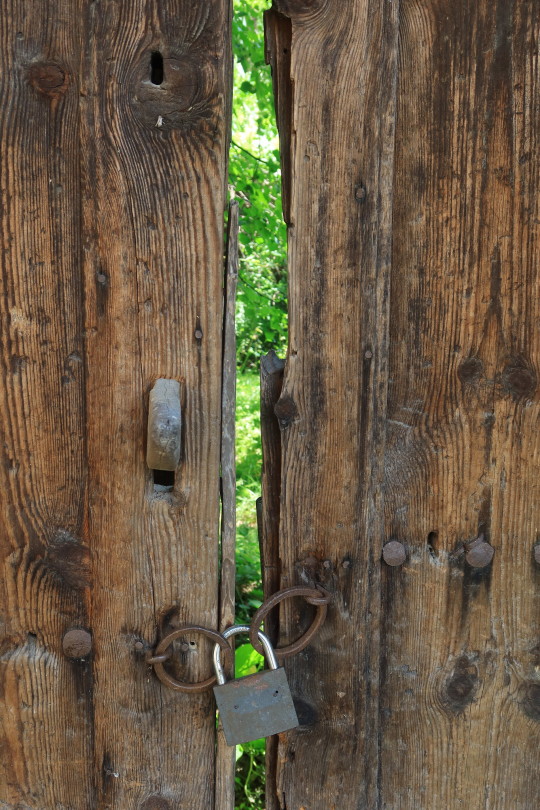
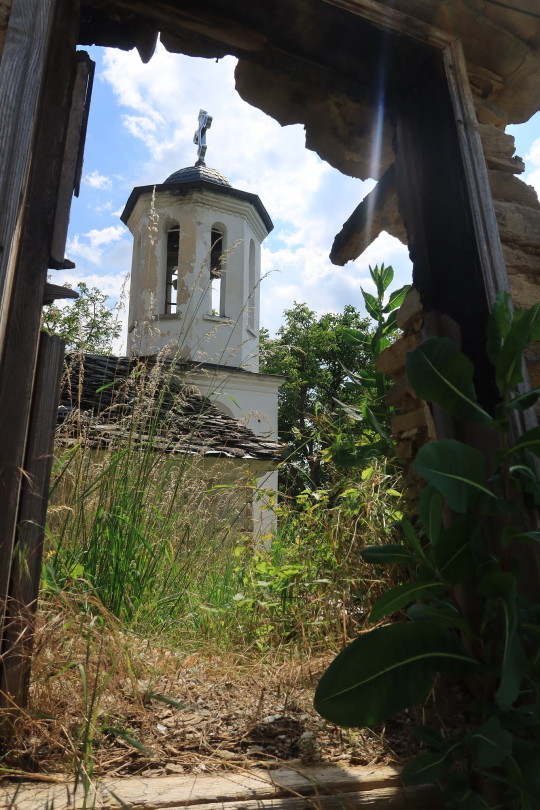
Leshten village (2) (3) (4) (5) by Lyura
#village#flowers#houses#roaming the streets#stone buildings#gates#churches#bulgaria#blagoevgrad province
13 notes
·
View notes
Text

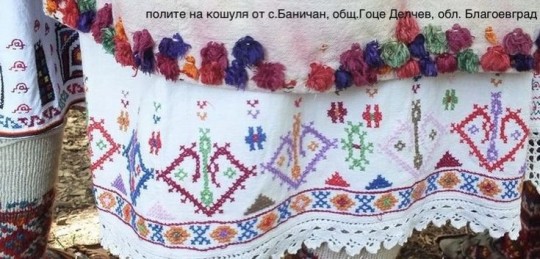

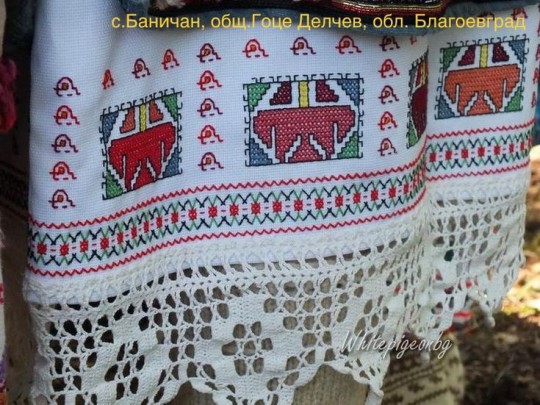
Embroidery on the front (1) and hems (2, 3, 4)of chemises from the village of Banichan, Blagoevgrad province, Bulgaria. | Шевици от пазвите и полите на ризи (кошули) от с. Баничан, Гоцеделчевско, обл. Благоевград.
via @UrbanBasketina on Pinterest
1 note
·
View note
Photo
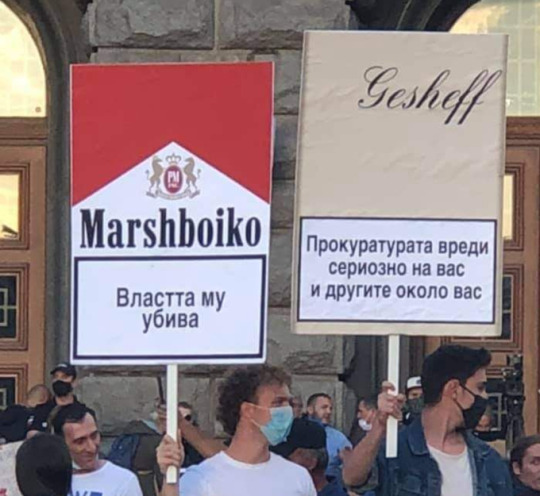
https://ift.tt/32mKSEQ is a town in Blagoevgrad Province, Southwestern -#Bulgaria, in the Southwestern Pirin Mountains, about 440 m above sea level. The town is an architectural reserve and 96 of its buildings are cultural monuments. https://t.co/jnIBWyLyjQ https://ift.tt/2ZuXM1u
0 notes
Photo

I-1 - E 79 between Dupnica and Blagoevgrad, Kyustendil Province, Bulgaria by Nenko Lazarov
1 note
·
View note
Photo

Квартал Стария град, Банско, Болгария
Nikolai Karaneshev | Фотография | Карта
#Болгария#по-русски#русский тамблер#русский тумблер#Банско#квартал Стария град#русский блог#путешествия#фото#Благоевград#Bansko#Bulgaria#Nikolai Karaneshev#Blagoevgrad Province#Winter#Snow#Night#Cold#Night Photography
0 notes
Photo

Asclepius Hygeia and Telesphoros
On the many discovered inscriptions we find Thracian, Greek and Latin names of individuals. Apart from the health-giving deities Asclepius, Hygeia and Telesphoros, here were worshipped Zeus and Hera, the Thracian Horseman, Dionysus, Hermes, Aphrodite. This is evident from their stamping on the Pautalian bronze coins, which the city was allowed to mint between the reign of Antoninus Pius (138-161) and Caracalia (21 1-217). And when Emperor Septimius Sever (193-211) and his family came to visit Pautalia it was only natural to emit a special emission.
In the late antiquity (end of 4th – 6th c.) a stone fortification was built on the Hissarlak hill, which occupied an area of 2.12 hectares
From the epigraphic monuments and the rescue archaeological excavations conducted in Kyustendil we learn of the different professions and trades in Roman Pautalia. Namely: retail dealer, cook, innkeeper, tailor of tent skins, sculptor, jurist. One inscription bears the names of the architects Laomedon and Glaukias. Many potter’s workshops were set up for common earthenware and fine table
ceramics. The long nights required clay lamps, which imitated the basic types of the period. A lamp mould was uncovered, which is evidence of local production. Large workshops produced mass building ceramics such as bricks, roof tiles and tubes, to meet the demands of the growing urbanization of this center on the upper Struma.
Augusta Traiana and Pautalia are so far the two cities in the present-day Bulgarian lands, which feature developed local bronze produc-tion. Doubtlessly, the ore deposits in the vicinity were an important factor. The casts were primarily bronze appliques for chariots and carts (usually busts of the gods Apollo, Athena, Heracles, Pan, Eros, the river god Strimon, etc., statuettes and vessels.
A large stonecutting workshop functioned in the city for the needs of construction and interior decoration. This is evident from the strong stonewalls built in the lowland and up on the Hissarlak, from the uncovered ruins of private, public and cult edifices (bases, capitals, columns, friezes, frontons), from the street pavement. An inscription tells us about marble working istanbul tourism conference. Big and smaller statues were made, as well as votive tablets with the images of Asclepius-Hygeia-Telesphoros, Zeus and Hera, Apollo, Heracles. The mosaic art also flourished in the city. A multitude of black-and-white and polychrome floor mosaics have been found during archaeological excavations, which are indicative of local ateliers for their laying.
Within the territory of Pautalia was the fortress of Germania (present-day Sapareva Banya). The name derives from a Thracian word (geermes) meaning “warm, hot”. This is the site of the only geyser in the country. Germania is the birthplace of Velisarius, general of Emperor Justinian the Great (527-565). In the southernmost part of the Pautalian territory, in the direction of Blagoevgrad, was the Thracian village of Skaptopara. Its inhabitants had become quite affluent – the land was good, the mineral baths were visited by many, and the local fair gathered a lot of people. However, the peasants began to suffer losses from the provincial officials and some military
men, especially during the bathing proce-dures or at the marketplace. These did not pay anything for food or entrance. An inscription found in Gramada quarters (Blagoevgrad) contains their appeal to Emperor Gordian III (238- 244). The document was written by a Pautalian defense lawyer, dealing with disputes in the province. The inhabitants mentioned that if they were not rendered help, they would leave this place for good.
Constanta region in North Dobrudja
Emperor Marcus Ulpius Trajan conquered the stubborn Dacians in 106 and founded the province of Dacia. But there was no city called “Victory City” there. So, he founded Tropaeum Traiani (Trajan’s Trophy) (at Adamclisi village, Constanta region in North Dobrudja) and erected an impressive memorial complex in memory of the perished Roman legions. Its location however was in Lower Moesia. Then he founded Nicopolis ad Istrum and Marcianopolis, called after his sister. These two cities then lied within the province of Thrace. In the south-westernmost parts of the province, near Macedonia and Achaia, was constructed Nicopolis ad Nestum or Mestum, which in translation means “City of the victory at Mesta river”.
Trajan has not fought battles in this region and this name is a little perplexing. Today the ruins of Nicopolis ad Nestum can be seen at Garmen village, 7 km northeast of the town of Gotse Delchev, not far away from the present-day Bulgarian-Greek border. In contrast to the garrisons and civilian settlements on the right bank of the Danube, where the climate was harshly continental, here the natural conditions were wonderful – mild winter, warm summer, pleasant spring and autumn.
0 notes
Photo
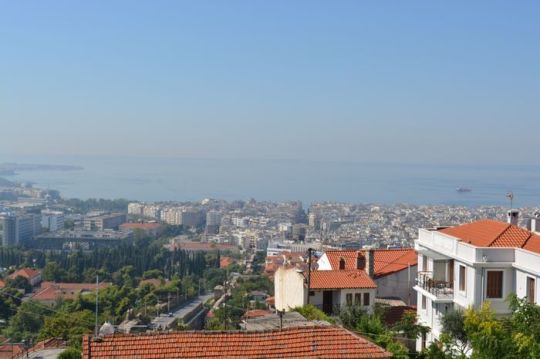
Asclepius Hygeia and Telesphoros
On the many discovered inscriptions we find Thracian, Greek and Latin names of individuals. Apart from the health-giving deities Asclepius, Hygeia and Telesphoros, here were worshipped Zeus and Hera, the Thracian Horseman, Dionysus, Hermes, Aphrodite. This is evident from their stamping on the Pautalian bronze coins, which the city was allowed to mint between the reign of Antoninus Pius (138-161) and Caracalia (21 1-217). And when Emperor Septimius Sever (193-211) and his family came to visit Pautalia it was only natural to emit a special emission.
In the late antiquity (end of 4th – 6th c.) a stone fortification was built on the Hissarlak hill, which occupied an area of 2.12 hectares
From the epigraphic monuments and the rescue archaeological excavations conducted in Kyustendil we learn of the different professions and trades in Roman Pautalia. Namely: retail dealer, cook, innkeeper, tailor of tent skins, sculptor, jurist. One inscription bears the names of the architects Laomedon and Glaukias. Many potter’s workshops were set up for common earthenware and fine table
ceramics. The long nights required clay lamps, which imitated the basic types of the period. A lamp mould was uncovered, which is evidence of local production. Large workshops produced mass building ceramics such as bricks, roof tiles and tubes, to meet the demands of the growing urbanization of this center on the upper Struma.
Augusta Traiana and Pautalia are so far the two cities in the present-day Bulgarian lands, which feature developed local bronze produc-tion. Doubtlessly, the ore deposits in the vicinity were an important factor. The casts were primarily bronze appliques for chariots and carts (usually busts of the gods Apollo, Athena, Heracles, Pan, Eros, the river god Strimon, etc., statuettes and vessels.
A large stonecutting workshop functioned in the city for the needs of construction and interior decoration. This is evident from the strong stonewalls built in the lowland and up on the Hissarlak, from the uncovered ruins of private, public and cult edifices (bases, capitals, columns, friezes, frontons), from the street pavement. An inscription tells us about marble working istanbul tourism conference. Big and smaller statues were made, as well as votive tablets with the images of Asclepius-Hygeia-Telesphoros, Zeus and Hera, Apollo, Heracles. The mosaic art also flourished in the city. A multitude of black-and-white and polychrome floor mosaics have been found during archaeological excavations, which are indicative of local ateliers for their laying.
Within the territory of Pautalia was the fortress of Germania (present-day Sapareva Banya). The name derives from a Thracian word (geermes) meaning “warm, hot”. This is the site of the only geyser in the country. Germania is the birthplace of Velisarius, general of Emperor Justinian the Great (527-565). In the southernmost part of the Pautalian territory, in the direction of Blagoevgrad, was the Thracian village of Skaptopara. Its inhabitants had become quite affluent – the land was good, the mineral baths were visited by many, and the local fair gathered a lot of people. However, the peasants began to suffer losses from the provincial officials and some military
men, especially during the bathing proce-dures or at the marketplace. These did not pay anything for food or entrance. An inscription found in Gramada quarters (Blagoevgrad) contains their appeal to Emperor Gordian III (238- 244). The document was written by a Pautalian defense lawyer, dealing with disputes in the province. The inhabitants mentioned that if they were not rendered help, they would leave this place for good.
Constanta region in North Dobrudja
Emperor Marcus Ulpius Trajan conquered the stubborn Dacians in 106 and founded the province of Dacia. But there was no city called “Victory City” there. So, he founded Tropaeum Traiani (Trajan’s Trophy) (at Adamclisi village, Constanta region in North Dobrudja) and erected an impressive memorial complex in memory of the perished Roman legions. Its location however was in Lower Moesia. Then he founded Nicopolis ad Istrum and Marcianopolis, called after his sister. These two cities then lied within the province of Thrace. In the south-westernmost parts of the province, near Macedonia and Achaia, was constructed Nicopolis ad Nestum or Mestum, which in translation means “City of the victory at Mesta river”.
Trajan has not fought battles in this region and this name is a little perplexing. Today the ruins of Nicopolis ad Nestum can be seen at Garmen village, 7 km northeast of the town of Gotse Delchev, not far away from the present-day Bulgarian-Greek border. In contrast to the garrisons and civilian settlements on the right bank of the Danube, where the climate was harshly continental, here the natural conditions were wonderful – mild winter, warm summer, pleasant spring and autumn.
0 notes
Photo

Asclepius Hygeia and Telesphoros
On the many discovered inscriptions we find Thracian, Greek and Latin names of individuals. Apart from the health-giving deities Asclepius, Hygeia and Telesphoros, here were worshipped Zeus and Hera, the Thracian Horseman, Dionysus, Hermes, Aphrodite. This is evident from their stamping on the Pautalian bronze coins, which the city was allowed to mint between the reign of Antoninus Pius (138-161) and Caracalia (21 1-217). And when Emperor Septimius Sever (193-211) and his family came to visit Pautalia it was only natural to emit a special emission.
In the late antiquity (end of 4th – 6th c.) a stone fortification was built on the Hissarlak hill, which occupied an area of 2.12 hectares
From the epigraphic monuments and the rescue archaeological excavations conducted in Kyustendil we learn of the different professions and trades in Roman Pautalia. Namely: retail dealer, cook, innkeeper, tailor of tent skins, sculptor, jurist. One inscription bears the names of the architects Laomedon and Glaukias. Many potter’s workshops were set up for common earthenware and fine table
ceramics. The long nights required clay lamps, which imitated the basic types of the period. A lamp mould was uncovered, which is evidence of local production. Large workshops produced mass building ceramics such as bricks, roof tiles and tubes, to meet the demands of the growing urbanization of this center on the upper Struma.
Augusta Traiana and Pautalia are so far the two cities in the present-day Bulgarian lands, which feature developed local bronze produc-tion. Doubtlessly, the ore deposits in the vicinity were an important factor. The casts were primarily bronze appliques for chariots and carts (usually busts of the gods Apollo, Athena, Heracles, Pan, Eros, the river god Strimon, etc., statuettes and vessels.
A large stonecutting workshop functioned in the city for the needs of construction and interior decoration. This is evident from the strong stonewalls built in the lowland and up on the Hissarlak, from the uncovered ruins of private, public and cult edifices (bases, capitals, columns, friezes, frontons), from the street pavement. An inscription tells us about marble working istanbul tourism conference. Big and smaller statues were made, as well as votive tablets with the images of Asclepius-Hygeia-Telesphoros, Zeus and Hera, Apollo, Heracles. The mosaic art also flourished in the city. A multitude of black-and-white and polychrome floor mosaics have been found during archaeological excavations, which are indicative of local ateliers for their laying.
Within the territory of Pautalia was the fortress of Germania (present-day Sapareva Banya). The name derives from a Thracian word (geermes) meaning “warm, hot”. This is the site of the only geyser in the country. Germania is the birthplace of Velisarius, general of Emperor Justinian the Great (527-565). In the southernmost part of the Pautalian territory, in the direction of Blagoevgrad, was the Thracian village of Skaptopara. Its inhabitants had become quite affluent – the land was good, the mineral baths were visited by many, and the local fair gathered a lot of people. However, the peasants began to suffer losses from the provincial officials and some military
men, especially during the bathing proce-dures or at the marketplace. These did not pay anything for food or entrance. An inscription found in Gramada quarters (Blagoevgrad) contains their appeal to Emperor Gordian III (238- 244). The document was written by a Pautalian defense lawyer, dealing with disputes in the province. The inhabitants mentioned that if they were not rendered help, they would leave this place for good.
Constanta region in North Dobrudja
Emperor Marcus Ulpius Trajan conquered the stubborn Dacians in 106 and founded the province of Dacia. But there was no city called “Victory City” there. So, he founded Tropaeum Traiani (Trajan’s Trophy) (at Adamclisi village, Constanta region in North Dobrudja) and erected an impressive memorial complex in memory of the perished Roman legions. Its location however was in Lower Moesia. Then he founded Nicopolis ad Istrum and Marcianopolis, called after his sister. These two cities then lied within the province of Thrace. In the south-westernmost parts of the province, near Macedonia and Achaia, was constructed Nicopolis ad Nestum or Mestum, which in translation means “City of the victory at Mesta river”.
Trajan has not fought battles in this region and this name is a little perplexing. Today the ruins of Nicopolis ad Nestum can be seen at Garmen village, 7 km northeast of the town of Gotse Delchev, not far away from the present-day Bulgarian-Greek border. In contrast to the garrisons and civilian settlements on the right bank of the Danube, where the climate was harshly continental, here the natural conditions were wonderful – mild winter, warm summer, pleasant spring and autumn.
0 notes
Photo

KING COTYS IV OF ODRYSIA (THRACIAN) AND THE THIRD MACEDONIAN WAR (171-168 BCE) AGAINST ROME
This is an excerpt from my post, ‘THRACIANS, REAPERS OF THE BALKANS’.
The Macedonians and Romans clashed in two major conflicts known as the First and Second Macedonian Wars. The Thracians were divided with some of the more “wild” tribes siding with the Romans in 172 BCE while the more “civilized” Odrysians under their king, Cotys IV, sided with the Macedonians.
“Cotys was a man of distinguished appearance and of great ability in military affairs, and besides, quite unlike a Thracian in character. For he was of sober habits, and gave evidence of a gentleness of temper and a steadiness of disposition worthy of a man of gentle birth.” – Histories by Polybius, 27.12.
“Cotys, king of the Thracians, was a man who in matters of warfare moved with vigor and was superior in judgement, and who in other respects as well was responsible and deserving of friendship. He was abstinent and circumspect in the highest degree, and most important of all, was completely exempt from the besetting vices of the Thracian people.” – The Library of History by Diodorus Siculus, 30.3.1.
Battle or Kallinikos (171 BCE):
When the Third Macedonian War (171-168 BC) broke out between Rome and Macedon the Odrysians proved to be valuable assets as they were instrumental in the Battle of Kallinikos (171 BCE). Cotys IV formed the Macedonian king’s left wing with his army of Thracian cavalrymen and light infantrymen, after the initial ranged skirmish “the Thracians, like wild beasts kept in cages and suddenly released, set up a deafening roar and charged the Italian cavalry on the right wing with such fury that, in spite of their experience of war and their native fearlessness, they threw them into disorder. [3] The infantry on both sides snapped the lances of the cavalry with their swords, cut at the legs of the horses and stabbed them in the flanks” (Livy, 42.59.2-3).
In the end the battle resulted in a stalemate but it is seen as a Macedonian victory since they only lost 20 cavalrymen and 40 infantry while the Romans lost 200 cavalrymen, 2000 infantrymen, and 600 other were imprisoned.
“On their return to camp the victors were all in high spirits, but the Thracians surpassed all in the insolence of their joy. They returned to camp singing and carrying the heads of their enemies fixed on their spears.” – The History of Romeby Titus Livius (Livy), 42.60.2.
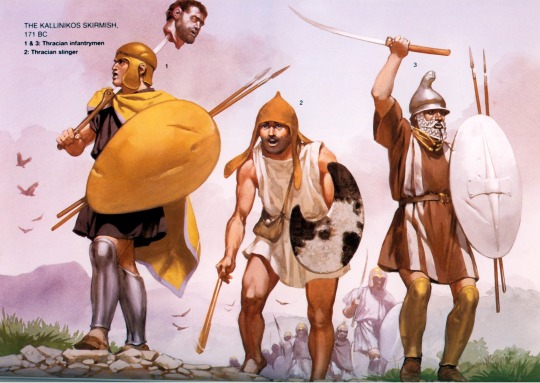
^ Osprey – ‘Men-at-Arms’ series, issue 360 – The Thracians, 700 BC-AD 46 by Christopher Webber and Angus McBride (Illustrator). Plate F: The Kallinikos Skirmish, 171 BC – “Livy says that the victorious Thracian troops returned to their camp swaggering singing and dancing, with severed Roman heads on their rhomphaias as trophies.” F1: Thracian infantryman – “He has the late 4th century shield, Chalkidian helmet, and greaves found in the Dolna Koznitza mound near Kyustendil, together with a rhomphaia and the black tunic described by Plutarch. The Thracians at Pydna may have looked like this, as they are described with ‘glittering’ shields and black tunics. Alternatively, this bronze-faced shield may be a parade piece – instead he might carry an ordinary white thureos.” F2: Thracian slinger– “There are only rare mentions and no known depictions of Thracian slingers, and this reconstruction is based on an auxiliary slinger from Trajan’s Column.” F3: Thracian infantryman – “This figure is shown in the clothes worn by a hunter in the Alexandrovo tomb paintings, and armor and equipment found together in the Blagoevgrads region of Bulgaria: bronze Thracian helmet, bronze greaves, three bronze torques, and an iron rhomphaia. They are dated to around the end of the 4th century. He carries an oval thureos like those shown in the Kazanluk tomb paintings. The rhomphaia had a large ring in the centre, which could have been used for a carrying strap.”
Battle of Pydna (168 BCE):
After aiding the Macedonians Cotys IV had to return to his realm since it was invaded by a rival Thracian king named Autlesbis who was backed by the Attalid (Attalid dynasty of Pergamon, an ally of Rome) officer Corragus. After these troubles in Thrace were quelled by the Thraco-Macedonian alliance, Cotys returned to the side of the Macedonians where he would once again aid them against the Romans at the famed Battle of Pydna in 168 BCE. The night before the battle that would decide the fate of Macedon and Thrace there was a lunar eclipse which according to Plutarch was believed by the Macedonians to foreshadow the fall of the Macedonian king.
“[7] Now, when night had come, and the soldiers, after supper, were betaking themselves to rest and sleep, on a sudden the moon, which was full and high in the heavens, grew dark, lost its light, took on all sorts of colors in succession, and finally disappeared. [8] The Romans, according to their custom, tried to call her light back by the clashing of bronze utensils and by holding up many blazing fire-brands and torches towards the heavens; the Macedonians, however, did nothing of this sort, but amazement and terror possessed their camp, and a rumor quietly spread among many of them that the portent signified an eclipse of a king.” – The Parallel Lives (The Life of Aemilius Paulus) by Plutarch, 17.7-8.
How the battle commenced on the next day varies but I’ll just mention the one which gives the Thracians a more prominent role. A Roman mule broke for the nearby river which divided the two armies and from which both drank. When three Roman soldiers went to retrieve it they saw two Thracian soldiers drawing the mule onto their side of the river. The Romans crossed the river, killed one of the Thracians and reclaimed the mule. A group of 800 Thracians who were guarding the bank witnessed the slaying of their comrade so “[9] enraged at seeing a comrade killed before their eyes, ran across the river in pursuit of those who slew him; [10] then more joined in and at last the whole body” (History of Rome by Livy, 44.40.9-10).
“First the Thracians advanced, whose appearance, Nasica says, was most terrible, — men of lofty stature, clad in tunics which showed black beneath the white and gleaming armor of their shields and greaves, and tossing high on their right shoulders battle-axes with heavy iron heads.” – The Parallel Lives (The Life of Aemilius Paulus) by Plutarch, 18.3 or 5.
From this engagement the battle had commenced. The Macedonians lost decisively as their infantrymen crumbled “to pieces like a falling house” (Livy, 44.41) which led the Macedonian and Odrysian kings fleeing the field with their cavalrymen. The Roman pursuit was hampered by their massacring of the enemy infantrymen.
“It is universally admitted that never had so many Macedonians been killed by the Romans in a single battle. As many as 20,000 men perished; 6000 who had fled to Pydna fell into the enemy’s hands, and 5000 were made prisoners in their flight.” – The History of Rome by Titus Livius (Livy), 44.42.7.
For the most part, the Third Macedonian War ended after this battle. King Perseus of Macedon eventually gave himself up to the Romans who paraded him in chains as their captive during the triumph celebrating their victory over Macedon. Perseus was placed under house arrest until his death shortly after. The Antigonid dynasty which was founded by Alexander’s diadoch Antigonus I Monophthalmus back in 306 BCE reached its end with Perseus of Macedon.

^ Perseus surrenders to Paullus by Jean-François Pierre Peyron (1802).
Cotys IV also felt the bitter sting of defeat when the Romans took his son captive along with Perseus and the latter’s family, sending them off to Italy. With Macedon subdued and his son held captive, Cotys made this wise decision to accept the new power shift by sending an embassy to the Romans asking for an alliance with the Romans and the return of his son.
The Macedonians once again rose up in rebellion under a pretender named Andriscus. In the end, the fourth and final Macedonian War was won by the Romans and resulted in the subjugation of Macedon in 148 BCE. Two years later the Romans establishment of the Roman province of Macedonia which encompassed Macedonia, Thessaly, Epirus and Paeonia as well as southwestern Thrace, and coastal and southern Illyria. The Thracians however, along with their Celtic and Illyrian neighbors, continued to harass the new Roman possessions.
After the Macedonian Wars, the Thracians are mentioned less and less until they eventually faded back into the shadows of history. Today few have ever heard of the Thracians and even less know much about them. These “barbarians” who lived on the edges of the “civilized” world of the Greeks and Macedonians made a name for themselves nonetheless. The mere mention of them conjured up thoughts of a foreign, savage, and brutal society of warriors bent on plunder and revelry. They were reviled and feared but were admired for their brave and hardy nature and eagerly sought after by kings and commanders. In the end, the Thracians were victims of a history written by their enemies and outsiders. Let us not forget that the Thracians inspired the use of the pelte shield and the light infantrymen known as peltasts, their caps inspired the Phrygian/Thracian helmets created by the Greeks and Macedonians, supposedly inspired the Athenian general Iphicrates’ reforms, invented the cavalry wedge formation implemented by Philip II and his son Alexander the Great and revolutionized the religious practices and beliefs of the classical Greek and Hellenistic world.
Head over to my post, ‘THRACIANS, REAPERS OF THE BALKANS’, to learn about their culture, religion, weaponry, armors, battle tactics, and their influence on the ancient world. Their history as well, from the tales in the Iliad to the era of the Greco-Persian Wars, and the rise of Macedon under Philip II and his son Alexander the Great.
65 notes
·
View notes
Text
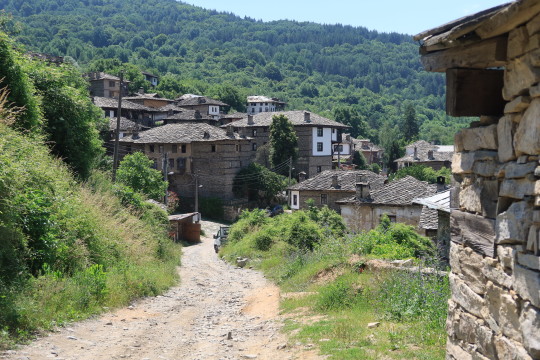

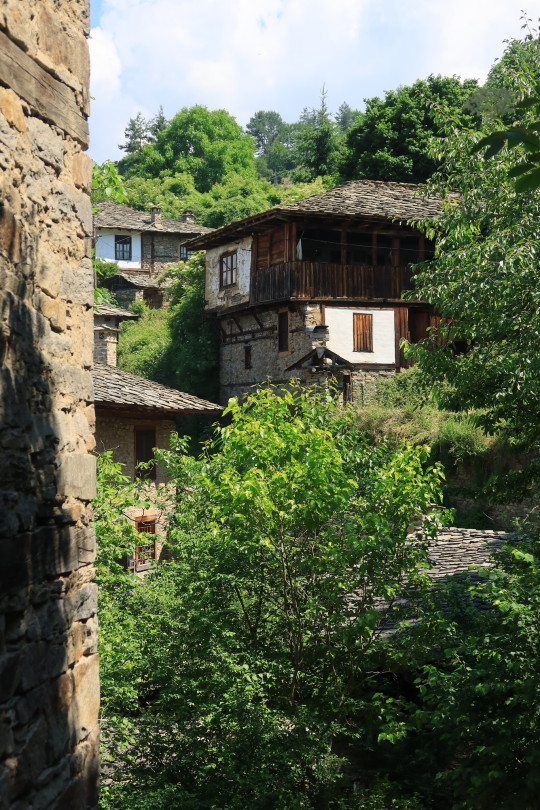

Kovachevitsa village (2) (3) (4) by Lyura
7 notes
·
View notes
Photo

Avramovo is situated at 1 267 metres above sea level in Blagoevgrad province, southwestern Bulgaria 📷 Denis Grigorov / flickr #bulgarianfacts #bulgaria #българия🇧🇬 #bulgaria🇧🇬 #bulgaria2017 #bulgariaofficial #visitbulgaria #travelbulgaria #explorebulgaria #българия #българия2017 #travelgoals #travel2017 #traveleurope #travelsolo #travelalone #travelinspiration #travelinspo #exploretheworld #exploresolo #exploretheglobe #natgeobalkan #balkans #balkantrip #destinations #factsonly #factoftheday #truefacts #learningisfun #didyouknow
8 notes
·
View notes
Photo
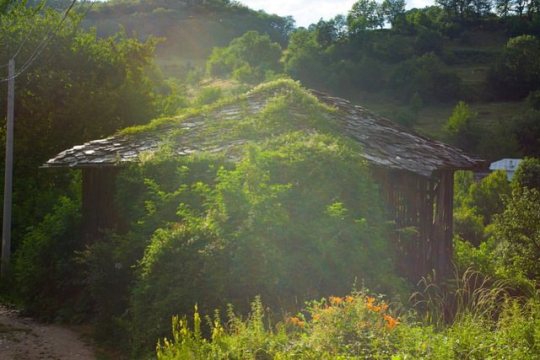
The old village of Dolen - gallery updated. http://www.bonevphotography.com/photography/places/dolen/ #getlost #explorer #optoutside #worldshotz #theworldshotz #createexplore #exploretocreate #discoverearth #travelphoto #theglobewanderer #roamtheplanet #letsgosomewhere #exploretheglobe #nakedplanet #places_wow #instapassport #instatraveling #igtravel #travelblog #instago #mytravelgram #travelingram #stayandwander #bonevphotography #leicam #oftheafternoon #spicollective #dolen (at Dolen, Blagoevgrad Province) https://www.instagram.com/p/BziIaIbjJ8F/?igshid=10cgbbs5cee7l
#getlost#explorer#optoutside#worldshotz#theworldshotz#createexplore#exploretocreate#discoverearth#travelphoto#theglobewanderer#roamtheplanet#letsgosomewhere#exploretheglobe#nakedplanet#places_wow#instapassport#instatraveling#igtravel#travelblog#instago#mytravelgram#travelingram#stayandwander#bonevphotography#leicam#oftheafternoon#spicollective#dolen
0 notes
Video
vimeo
Drone movies ''Zornitza Family Estate'' from HALDIGITAL97 on Vimeo.
The new best wedding location
Zornitza Family Estate · Melnik, Blagoevgrad Province, Bulgaria
instagram.com/haldigital97/ 2017@
1 note
·
View note
Photo
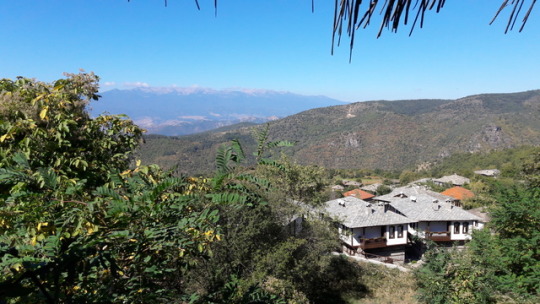
Kovachevitsa is a village in Blagoevgrad Province, Bulgaria.
3 notes
·
View notes
Text
【Yahoo論壇/黎蜗藤】馬其頓共和國改名,糾正「霸佔歷史」之風
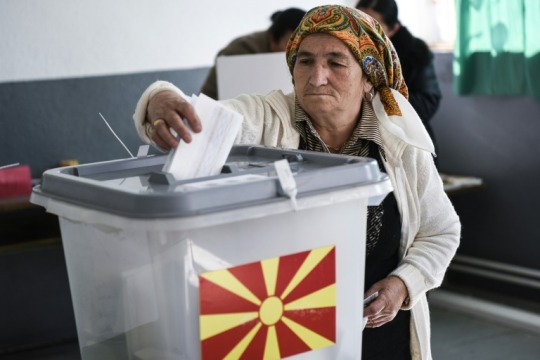
圖片來源:法新社
9月底,馬其頓共和國進行全民公投決定是否把國名改爲「北馬其頓共和國」。公投最後以97%讚成告終,但投票率只有37%,不符合設定的最低要求。於是,馬其頓共和國總統在10月9日,又把改名議案推到國會,希望通過國會投票修憲,在本周内改國名成功。
馬其頓共和國要改名,唯一的原因是南方的鄰居希臘反對它用馬其頓這個名稱。希臘反對基於兩個理由:第一,基於歷史與民族情感的原因,認為馬其頓是希臘文化的一部分,不能被「馬其頓共和國」佔據;第二,基於現實的原因,害怕馬其頓共和國因此會對希臘北部的「馬其頓省」提出領土主張。
我們知道馬其頓這個名稱一般是從世界事上的馬其頓帝國,即亞歷山大大帝開始的。簡而言之,在古希臘時期,古馬其頓是希臘半島北方的國家,最初大致位於現在希臘北部馬其頓省的位置。馬其頓國王腓力二世(Philip II)在公元前4世紀中期開始擴張,把北部和東北部的土地變為馬其頓王國的附屬領土,這樣才把現在的馬其頓共和國、保加利亞的布拉格耶夫格勒州(Blagoevgrad Province)、以及色雷斯地區等包括在馬其頓王國的領土中。
公元前337年,腓力二世南下與希臘城邦共同成立的科林斯聯盟(League of Corinth)。其意義有二:第一,希臘各城邦(除斯巴達)承認馬其頓的霸主地位;第二,馬其頓正式成為希臘世界的一員,從此用希臘文。古馬其頓的言語到底是希臘方言的一種,還是與希臘語相近的一種語言尚有爭論。但所有現在遺留下來的馬其頓文本,都用希臘文寫成。這意味著,最晚從當時開始,馬其頓已經不再被希臘城邦視為「蠻夷」,而視爲希臘世界的一部分。
腓力二世的兒子亞歷山大大帝東征,建立空前龐大的亞歷山大帝國,把希臘文化擴散到中東、埃及、波斯等地。這個歷史上著名的「希臘化時代」(Hellenistic Period),正以馬其頓帝國擴張為載體。因此,馬其頓帝國被視爲希臘文化的一部分,乃有堅實的歷史根據。這也是希臘人在歷史上最光輝的時刻,民族感情意義無法讓渡。
亞歷山大死後,希臘與馬其頓地區建立安提柯王朝。此後,希臘世界分裂,馬其頓與其他希臘城邦征戰不斷。但這時馬其頓的統治中心還在今天的希臘境內。經過三次羅馬—馬其頓戰爭,馬其頓帝國被滅,整個希臘地區被羅馬吞併。羅馬的「馬其頓省」包括現在希臘的馬其頓、馬其頓共和國、保加利亞的布拉格耶夫格勒州等地。它又分爲第一馬其頓,差不多是今天希臘馬其頓地區的境界,首都是現在希臘的第二大城市塞薩洛尼基(Thessaloniki);以及「第二馬其頓」,差不多就是現在馬其頓共和國的國境,首都是斯托比(Stobi)。這就是歷史上「馬其頓地區」的形成過程。但這時,無論第一還是第二馬其頓,裏面的人都是希臘化的馬其頓人。
此後的歷史長河中,整個巴爾幹半島都經歷複雜深刻的變化。在羅馬帝國崩潰後,斯拉夫人在六世紀從東歐平原西遷,進入巴爾幹半島形成「南斯拉夫人」,現在馬其頓共和國的「馬其頓人」,或者應該稱「馬其頓斯拉夫人」(Macedonian Slavs),就是衆多「南斯拉夫人」的一支,與保加利亞人相近(現在的保加利亞的布拉格耶夫格勒州有「保加利亞馬其頓人」),他們佔據了現在的馬其頓共和國國境,取代了原先的希臘民族。它們與古馬其頓帝國的歷史沒有直接聯係。「第二馬其頓」的首都斯托比被完全荒棄(後來才被考古發掘出來),就是這種歷史文化斷層的見證。
顯而易見,「馬其頓斯拉夫人」要「佔用」希臘人的馬其頓歷史是毫無根據的。他們繼續使用「馬其頓」這個名字也不能說全無道理:他們畢竟也使用了「馬其頓」這個名稱很久。從二十世紀初的(斯拉夫)馬其頓人民族主義運動開始,他們就使用馬其頓這個名字,在南斯拉夫時代,也沿用「馬其頓社會主義共和國」的名稱成爲六個加盟共和國之一。
可是令希臘人最難忍受的,不但是他們沿用「馬其頓」國名,還在宣傳中刻意打造自己與馬其頓帝國的關係。馬其頓共和國這樣做的原因當然是為有利可圖:首先,通過追溯歷史,可以提升他們的民族榮譽感;其次,這由可以在國際上打響這個國家的名片,在旅遊業等文化產業上有重要意義,這些對這樣一個新獨立的小國都是難得的歷史遺產。
平心而論,「馬其頓共和國」的歷史觀是打了一個擦邊球。在其他國家而論,利用自己現代領土上的古代文明,雖然不一定有真實聯係,把自己打造為歷史古國的情況層出不窮。比如現在的埃及人(主體是阿拉伯人)和古時候的埃及文明沒有什麽聯係,現在的伊拉克人和敍利亞人(也是阿拉伯人)與古代的兩河文明也沒有什麽聯係。不但人種不一樣,古代兩河文明和埃及文明都是十七世紀到十九世紀之間被西方人重新發掘出來才為人所知。這不妨礙埃及和伊拉克敍利亞等用古老文明包裝自己。
問題在於,馬其頓帝國有其更正宗的傳人——現代希臘人,這就令「馬其頓共和國」所作所爲,名不正言不順了。
這樣,希臘人利用自己國家在諸多組織成員國地位,特別是北約與歐盟,力拒馬其頓共和國加入,也就不可避免了。爲了突破外交困境,把「馬其頓共和國」改名為「北馬其頓共和國」,從政治上看不得不為。在筆者看來,這也是糾正「霸佔歷史」的行爲,更值得肯定。

______________
【Yahoo論壇】係Yahoo奇摩提供給網友、專家的意見交流平台,本文章內容僅反映作者個人意見,不代表Yahoo奇摩立場。有話想說?不吐不快!>>> 快投稿Yahoo論壇
#_author:黎蜗藤#_uuid:40714bba-d62d-381a-83f2-0ba61c2c260b#_revsp:c1e5adeb-4747-44dc-b7f0-5913b6705d52#_lmsid:a077000000CFoGyAAL
0 notes
Photo
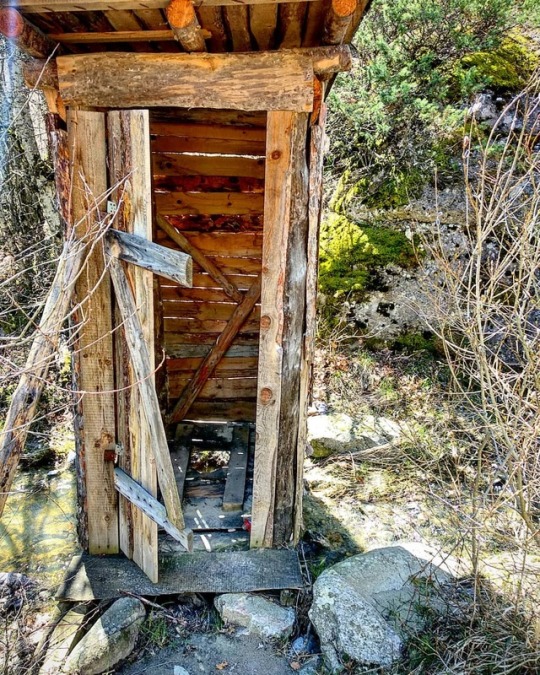
Традиционен кенеф над рекичка, свършваш си работата и рекичката го отнася. Traditional wooden restroom over the creek. #vegan #veganfriendly #enjoylife #naturelovers (at Osenovo, Blagoevgrad Province)
0 notes